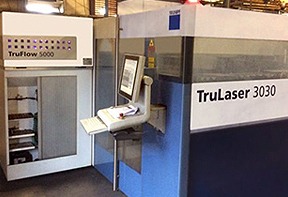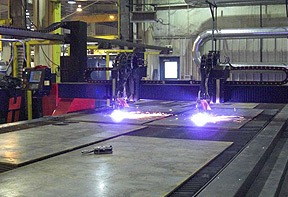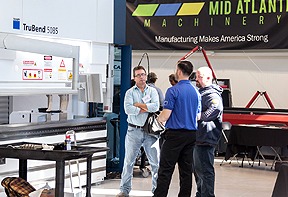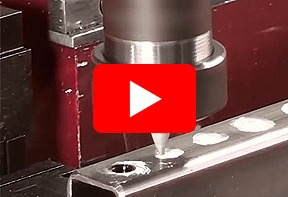Choosing the Right Cutting Machine: TRUMPF fiber lasers
TRUMPF fiber lasers have become one of the most popular and world-renowned cutting machines since they came to the market in the late 80s. The advanced technology, precision and ease of use appeals to metal fabricators everywhere; however, this investment can come with a lot of questions, especially for first time buyers. How can you determine if this cutting machine encompasses all of your fabrication needs?
To learn more, we spoke with Mid Atlantic Machinery Senior Applications Engineer, John Moran, to ask how he knows when a laser is the best choice. John is our in-house laser expert as he has completed over 1,000 care visits to help laser customers optimize their machine for their production.
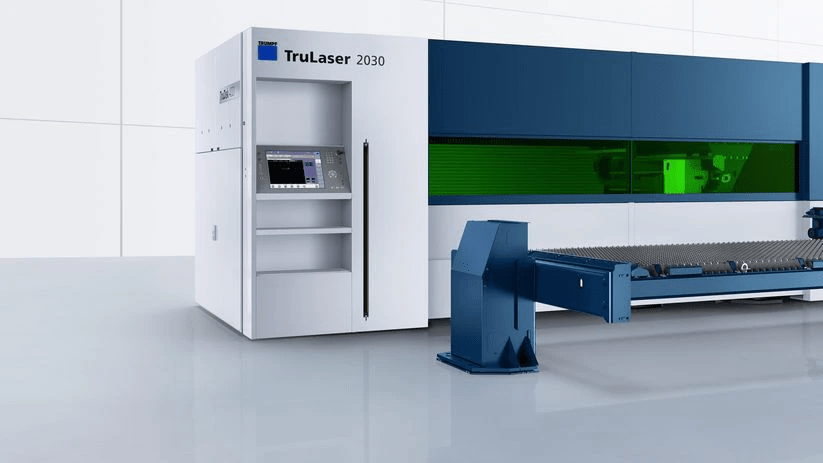
What material and applications are best for a laser?
“TRUMPF fiber lasers are able to cut parts out of almost any metal, including steel, stainless, aluminum, copper, brass, zinc, nickel alloys, tool steels, etc. These lasers can also cut coated metals such as galvanized, aluminized, anodized and pre-painted metals.”
“Very few laser operators know that these machines can cut expanded and perforated metals, textured and tread plate metals and laminated metals. Moreover, TRUMPF lasers have the capability to cut tubing and pre-formed metals, but some special techniques might be required for these processes.”
How should a fabricator consider power and speed on a TRUMPF Laser?
“While most lasers are 6 kilowatts (kw), they can be 4, 6, 8, 10 or 12 kw. A laser with higher kw equates to higher temperatures, allowing you to cut faster, cut thicker materials and cut more inches per minute (ipm).”
“When trying to decide what power laser to buy, ask for time studies on your typical parts. You can then compare the capacity and the time to manufacture to decide on speed versus machine cost. If you will never cut anything thicker than ½” or ¾” then you can use a laser with less power.”
“A 6kw fiber laser is rated to cut 1” thick steel, 1” thick stainless and 1” thick aluminum. Fabricators only look at 8 or 10kw lasers if they want to cut thick materials with nitrogen faster than they can with 6kw, or if they’re looking for a cleaner edge than the average laser.”
“The kilowatts of the laser and assist gas used will affect the finish of your parts and the speed at which you cut it. For example, ¼” steel cut with nitrogen on a 4kw fiber will have a slight burr while cutting at 140 ipm. With 6kw will you get better cutting at 240 ipm, and with 8kw you will cut cleanly at 350 ipm. If you are cutting ¼” steel with oxygen, all three lasers will cut around 110 ipm and have no burr.”
“If you are only cutting thin material or smaller sized parts, you will never be able to take advantage of increased speed with more power. Although an 8kw fiber might be rated to cut 16 gage stainless at 1960 ipm, when cutting small holes or parts that are 6” x 12,” the actual cutting time won’t be much different with a 6 kw laser rated to cut at 1200 ipm.”
What are the advantages to having a laser over other cutting solutions?
“The biggest advantage to cutting with a laser is how inexpensive they can be to operate. A TRUMPF laser costs about $2-3 an hour to run, whereas a waterjet or a plasma can cost anywhere from $20-25 an hour. A 6kw TRUMPF fiber laser and all the accessories will run on a 60-amp electrical service. You can also cut for over 50 hours on a single 240-liter Dewar of oxygen. The highest cost incurred on a laser is nitrogen assist gas. Nitrogen can add an additional $10 an hour.”
“Lasers very quickly and accurately cut parts that are clean and nearly burr free with no nibble marks, dross or rapid rust formation. A 4kw TRUMPF Fiber Laser can easily cut 16 gage stainless steel at 1200 ipm and hold +/-.005” tolerance with the part ready for welding or powder coating right after being cut. Lasers can also etch part markings cleanly and clearly with little effort and cut PVC coated materials while leaving the covering in place.”
“Moreover, the kerf on the TRUMPF fiber lasers are as little as .006,” depending on the thickness of the material. Lasers can be easily automated, whereas you rarely see a waterjet or plasma with automatic loading and unloading.”
What are the top 3 things to consider when deciding to purchase a laser?
“Will you be able to process the majority of the parts you want to with the table size and power you are looking to purchase?”
“Can you process your parts at a cost and tolerance that meet your requirements and what additional capacity will you have?”
“If you have this machine, what other opportunities does it provide for you?”
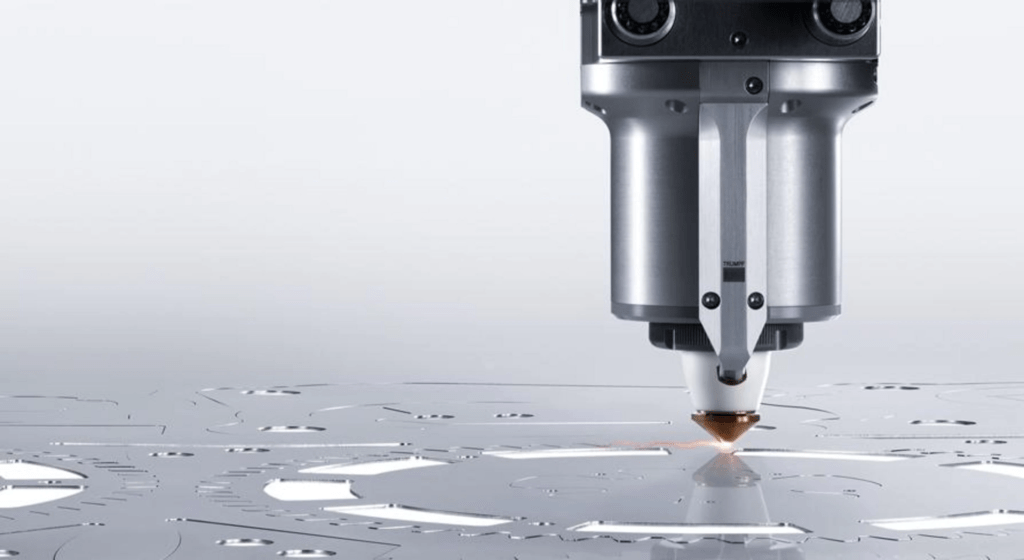
What do customers care the most about when considering purchasing a laser? Any concerns?
“It’s very easy for anyone to learn how to program and operate a laser, but a customer’s biggest concern is cost. A $500,000 laser has a monthly payment around $8,000. However, a job shop can charge at least $150 per hour for laser cutting, and as much as $500, depending on the industry served. At $150 per hour, with 40 hours per week of cutting you can earn, or save, $24,000 per month with a laser.”
“Nitrogen cost can be a big concern. Cutting mostly stainless and aluminum, or steel with nitrogen, you can spend upwards of $2,000 per month cutting one shift per day. Most gas suppliers require a 5- or 7-year contract, and that can be intimidating without knowing your future business needs. Peripheral items for a laser such as cutting gas piping and regulators, a transformer and electrical service, foundation work, a computer for programming or a device for loading sheets onto the laser bed can also add up. Even with these costs though, a TRUMPF laser could still save you money by increasing your production and productivity.”
How should someone determine if a laser is right for them?
“If you are currently subcontracting parts to be laser cut, a laser would be right for you. A lot of fabrication shops are paying the same price as a monthly laser payment for what’s being cut. In this case, it would make more sense to be in complete control of the production of your own parts, rather than risking long wait times.”
“Another consideration is your volume of parts. If they are ¼” thick and under, and you have a decent volume, a laser is most likely right for you. If your volume is low, or ½” and thicker you might want to consider an alternative method. If you are shearing, notching, and punching holes in parts, you could make them in one operation with higher quality and less handling using a laser. This will allow you to put skilled personnel on other tasks.”
TRUMPF fiber lasers are unparalleled in power and precision and offer advanced technology with simple operation. Though there are many factors to consider, TRUMPF lasers have the ability to increase any metal fabrication shop’s productivity. The ease of use offered by TRUMPF machinery allows anyone to become laser proficient with just a little bit of training.
To request a demo, or for more information, please contact Mid Atlantic Machinery.





